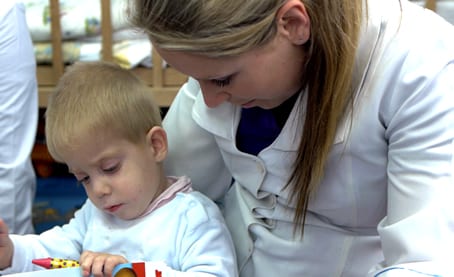The rise of the camcorder during the mid- to late 1980s sparked a human obsession of capturing life on video. But recording extreme sports or any intense activity was always a challenge, until the GoPro camera was invented.
Contributing to the ever-evolving video world is Curtin University alumnus David Newman, who currently works for GoPro and also co-invented the camera used in the award-winning feature film Slumdog Millionaire.
In the beginning, camcorders were bulky and recorded information on videotape. They were difficult to use for action shots and the results were hard to edit and amateurish.
Now the most popular consumer camera in the US is the GoPro, a small light and versatile camera that has changed the way we capture moments in time and made it easy for beginners and professionals alike to create an interesting, high-quality video.
[youtube]http://youtu.be/b89_PDSMf3I[/youtube]
As the Senior Director of Software Engineering at GoPro, Newman has experienced the change in technology over the last thirty years.
“During my youth I had taken a couple of ski trips in New Zealand and we would use our old school camcorders to record, kind of like early GoPro,” says Newman.
“We were trying to shoot ski videos and we realised how difficult it was.”
Years later, during his time studying a Bachelor of Engineering and Computer Systems at Curtin, Newman developed a passion for content creation and video editing.
“I always knew that I wanted to be involved in content creation and my whole career has been doing that, in one form or another,” Newman says.
Soon after graduating, Newman began writing video editing software and was given the opportunity to travel to the US as a contractor to showcase his work.
After six weeks in the US, Newman was offered a job with Applied Magic, which then led on to him to starting the video software company, Cineform, in 2001.
[youtube]https://www.youtube.com/watch?v=cN-YTcSnE6c[/youtube]
The aim of Cineform was to make video editing accessible to consumers by creating a high-quality video editing system that could be used on a desktop computer.
“We realised compressions, in the current editing system, were not designed for the computer environment, they were designed for the convenience of the camera manufacturers,” Newman says.
“The reason people couldn’t do video editing in 2001 was because the codec, the device that compressed data to enable faster transmission, was killing the computer’s performance.”
Cineform’s developments in video editing attracted not only consumers but also high profile Hollywood clients. Subsequently, the editing system was used for IMAX films, 2D and 3D feature films and GoPro.
“Even though we had this vision of creating video editing for consumers, we ended up servicing Hollywood, feature films and everything wacky in the world of feature content creation,” Newman says.
With Cineform, Newman worked on high-profile projects, such as the Oscar winning film, Slumdog Millionaire, which used Cineform techniques for 70 per cent of its scenes.
“We had the ability to compress image, so Slumdog Millionaire was shot with a camera head, a lens and an internet cable going into a backpack running a mac laptop that ran our software to compress the image,” elaborates Newman.
“It was filmed through the streets of Mumbai, so we were constantly packing the backpack with dry ice.”
[youtube]http://youtu.be/VdiGqni3hBk[/youtube]
Newman recalls the most humorous part of shooting the film was how the cinematographer chose to work with the camera.
“The cinematographer, Anthony Dod Mantle, dressed up like a crazy looking tourist and everyone ignored him, so they didn’t have to get filming permits,” he says.
“They could shoot anywhere throughout the city and no one knew that he had all that computer gear.
“The camera just looked a little bit bigger than an average camera, that’s how they shot most of it.”
Soon afterwards, Cineform introduced consumer-friendly plugins for video editing software, Adobe premier, and started experimenting with the technicalities of 3D editing.
He created Cineform 3D editing software Neo3D, which attracted the Go Pro Company, and led them to buying Cineform.
[youtube]http://youtu.be/_YEyzvtMx3s[/youtube]
With the shared aim of making video editing accessible to consumers, Newman is now working for Go Pro, where he has experienced and learned much more about software engineering and other fields than he ever imagined.
“I’ve gotten involved with the camera team and the media team, which was way beyond what I did in software,” Newman explains.
“One of the most enjoyable things was that I thought I was going to be treated as just a software guy but my role at GoPro is so much more.”
The Go Pro now has functions designed to cater for the film and TV industry, such as the 3D effect professional mode on the Hero3+ model, robot-like video transmitters and video cranes, functions that also appeal to the consumer market.
“GoPro has been experimenting with all types of different things in weird and wonderful locations,” he says.
“When we come up with some crazy new camera function, we want to make sure the consumers can use it.”



